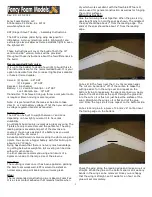
______________________________________________________________________________
34
recommend you open all compression
straps on the bag as much as possible
and leave the bag lid off so that air can
circulate around the packed canopy. Make
sure no mice or cats make their sleeping
quarters in you wing, and keep it well
distant from solvents and acids. Petrol and
other
petrochemicals
is
especially
abrasive for nylon and will dissolve the
cloth if allowed near.
The long-term storage temperature should
remain approximately constant between
10 and 25 degrees Celsius, and the
relative humidity between 50 and 75%.
Do not expose your UP Kibo to extreme
heat (storing it in the boot of a car parked
in the sun). The heat may cause moisture
to be pressed through the fabric, thereby
damaging the coating. High temperatures
in combination with moisture are a
particularly volatile mix that will accelerate
the hydrolysis process where the fibres
and the coating are decomposed. The
chemical composition of the canopy
material may begin to change from
temperatures as low as 60 degrees
Celsius !
Cleaning
If you feel it necessary to clean your UP
Kibo at any time then use lots of lukewarm
water and a soft sponge. More stubborn
stains can be cleaned with a weak soap
solution, and rinsed thoroughly. Then
leave it to dry in a shady but well-
ventilated area.
BEWARE!
Never use chemical
cleaning agents, brushes or
hard
sponges
on
the
material, as these destroy
the coating and affect the
strength of the cloth.
The canopy will become porous
and will loose structural strength. Never
attempt to clean your paraglider in a
washing machine. Even without using
detergents the simple mechanical
abrasion will quickly finish the canopy
and render it useless. Also avoid
dipping it in a swimming pool; the
chlorine will damage the cloth. If you
MUST rinse the parachute, e.g.
following a sea water landing, do so
with a gentle spray of fresh water.
Frequent spraying will accelerate the
ageing process.
Changing ASS Battens
The UP Kibo uses flexible Nylon®
battens to maintain the shape of the
leading edge. They are insusceptible
to bending damage and very robust,
but may in extreme cases become
bent or broken
– fear not, for they are
easily replaced on-site! A small pocket
at the top end of the batten allows it to
be released from the confines of the
little tunnel it resides in.
Push the batten back somewhat and
release the end from the pocket, then
remove it entirely. Transfer the total
length precisely to the replacement
material (supplied) and cut a new
length. File the ends of the new batten
and cover them with tape. Push the
new batten into place and secure.








































